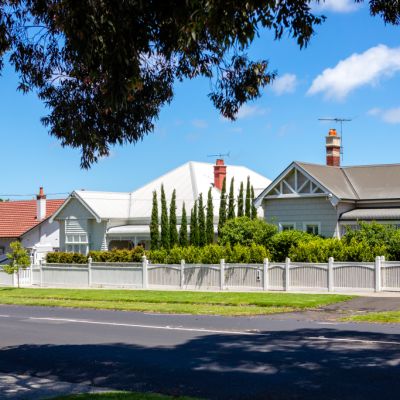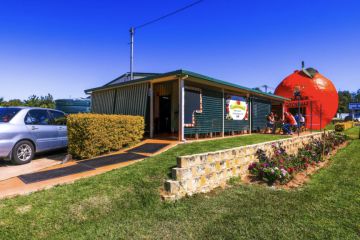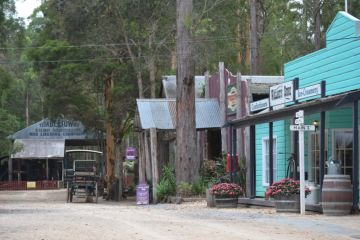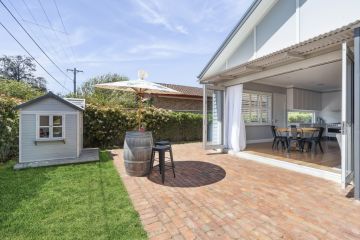September interest rate announcement: RBA lifts cash rate by 50 basis points to 2.35 per cent
Interest rates are set to jump by a further 50 basis points in the Reserve Bank of Australia’s (RBA) fifth consecutive monthly rise, despite dramatic drops in house prices and sales volumes in some areas.
The cash rate will now sit at 2.35 per cent, it was announced at Tuesday’s September board meeting, the highest level since December 2014 and the baseline for the significantly higher rates most people are paying.
RBA governor Philip Lowe flagged this this month’s rate rise would likely not be the last.
“The Board is committed to returning inflation to the 2–3 per cent range over time,” he said in a statement on Tuesday.
“It is seeking to do this while keeping the economy on an even keel. The path to achieving this balance is a narrow one and clouded in uncertainty, not least because of global developments.
“The further increase in interest rates today will help bring inflation back to target and create a more sustainable balance of demand and supply in the Australian economy.
“The Board expects to increase interest rates further over the months ahead, but it is not on a pre-set path. The size and timing of future interest rate increases will be guided by the incoming data and the Board’s assessment of the outlook for inflation and the labour market.”
NAB chief economist Alan Oster says the double rate rise came as no surprise.
“This rise was expected, even though the fall in house prices is happening faster than expected.
“We thought they’d be down by 4 or 5 per cent by the end of the year, but they’re already down 3.5 per cent, so maybe we got the timing slightly wrong.
“They might end up falling 15 to 20 per cent in the course of 15 months but that’s still below the rise of 22 per cent we’ve seen in the previous two years. Prices could go back as far as pre-COVID levels in some areas and while we’re not seeing that necessarily providing pain, it is providing fear.”
| Home loan principal | 0.50% increase |
| $500,000 | $146 |
| $750,000 | $219 |
| $1 million | $293 |
| $2 million | $676 |
The RBA is set on a course of tightening monetary policy to slow down the surging 6.1 per cent rate of inflation to pull the economy back to an even keel – and that fear is having a clear impact on the housing market.
New Australian Bureau of Statistics data shows the value of new home lending – for both owner-occupiers and investors – fell by a total of $2.62 billion in July and $3.62 billion year-on-year, to become the biggest monthly drop on record.
Domain data also showed that auction volumes across the combined capitals decreased by 9.1 per cent for September 3.
Onlookers say the “fear of missing out” – or FOMO – has now vanished, and in its place are other fears: of taking out a big mortgage that is hard to pay back at a higher interest rate, and of paying too much in a falling price market.
But this is unlikely to be the last rate rise we’ll see in the immediate future, Oster predicts.
“If the RBA can get inflation down to 2.5 per cent, then they’d probably want a cash rate of 2.5 per cent as well, and then it will sit at that rate for a while,” he said.
“But I suspect the underlying inflation rate will be higher than people expect in the September quarter.
“We’ve seen fuel and fruit and vegetable prices stabilising but that will be reversed in December when the government puts the fuel excise tax back on, so that’s when inflation will peak. But we’re still in a much better position than the UK currently, the US, New Zealand and Germany.”
Domain Home Loans chief executive Kareene Koh also sees further rate rises as inevitable. She says they might start going up by smaller increments at some point, but they’ll still generally rise.
“That will happen until we start to see a shift in inflation or spending behaviour in the next three to six months,” she said. “That’s what everyone is hoping for, but unfortunately we’re not seeing that in the data yet.
“I would hope, however, that we’ll start to see that in the next month or two as interest rates come up and fixed term rates expire, and at that point we’ll see a pullback in discretionary spending. Then prices will start to stabilise, and we’ll just see small increases in graduated steps from then on.”
The latest economic data from across the country has been mixed, with wage growth lifting by a modest 0.7 per cent over the second quarter, taking the annual rate to 2.6 per cent, and employment falling by 41,000 over July, although the unemployment rate was also lower at 3.4 per cent.
In the housing market, building approvals, in a further show of anxiety, plummeted by 17.7 per cent.
Meanwhile, CoreLogic research found values falling in every capital city except Darwin through August, with Sydney slugged by the greatest drop at 2.6 per cent in the fifth monthly fall for the city in a row.
With the stellar rises in values during the pandemic, however, most households are still in no danger of negative equity, says Hayden Groves, president of the Real Estate Institute of Australia.
“We’ve had rapid rises through most of Australia so, unless people have bought in the last six to nine months, they’re not feeling too much pressure,” he said. “We’re not too concerned about elevated levels of mortgage stress at the moment.
“Australian household balance sheets are still very strong with access to a lot of government stimulus in the economy, savings in the bank and property asset growth. The one thing we would caution the RBA around is overreaching on these rate rises.
“It does take a while for these rises to be felt and after this month’s rise we’d like to have a pause to see what impact they’ve had.”
We recommend
States
Capital Cities
Capital Cities - Rentals
Popular Areas
Allhomes
More
- © 2025, CoStar Group Inc.









